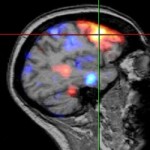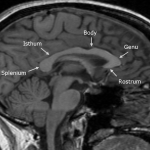Neural Networks in Utero: a Milestone in Fetal Development Timeline

The brain’s neural connectivity pattern is formed by structural links such as synapses or fiber pathways. Understanding brain connectivity is crucial to elucidating how neurons and neural networks process information and the establishment of these functional neural networks is one of the major stages of development of the human fetal brain. However, the developmental timetable…
Temporal Lobe Epilepsy and Hippocampal Volume Loss – Cell Loss or Receptor Change?

Temporal lobe epilepsy (TLE) is the most common form of partial or localized epilepsy in adults and accounts for approximately 60% of all patients with epilepsy. Medial temporal lobe epilepsy (mTLE), or limbic epilepsy, is the most common type of epilepsy, representing about 80% of all TLEs. mTLE is associated with head trauma, encephalitis, meningitis,…
Fetal Corpus Callosum Measurement as an Imaging Biomarker for Abnormal Neurodevelopment

Intrauterine growth restriction (IUGR) refers to abnormal fetal growth, and often results from poor maternal nutrition or lack of adequate oxygen to the fetus. IUGR is found in up to 10% of all pregnancies, in 20% of stillborn births and is associated with high morbidity and mortality. Volume and neural network changes in cerebral white and…
Hippocampal Atrophy in Critically Ill Patients

Critically ill patients may suffer delirium, encephalopathy or other neurobehavioral abnormalities, often with lasting effects. This is thought to be a result of systemic inflammation which compromises the blood brain barrier and leads to neural damage. The hippocampus is particularly sensitive to inflammatory and hypoxic change, both common sequelae to acute severe illness and/or chronic…
Changes in White and Gray Matter are Biomarkers of Alzheimer’s Disease Years before Clinical Manifestation

A debilitating disease of the aging mind, Alzheimer’s Disease affects 5 million people over the age of 65 years. Women are affected at a higher rate than men because they tend to live longer. The hallmark lesion of Alzheimer’s is a build up of pertinacious amyloid, resulting in the death of nerve cells and demise…
Ischemic Stroke Recovery and the Role of Cerebral GABA Activity

Stroke is the leading cause of disability in the world. It is the second leading cause of dementia, and the third most common cause of death. Stroke has a world incidence of 9.0 million and world prevalence of 30.7 million. There are two major kinds of stroke; hemorrhagic stroke and ischemic stroke. Ischemic stroke is…
White Matter Measurement Helps Predict Cognitive and Language Impairment in Tiny Preemies

Cognitive function and language development in children with neurodevelopmental delays can be helped dramatically through early detection and targeted interventions during infancy. In a recent study conducted at the Children’s Memorial Hermann Hospital (CMHH) and The University of Texas Medical School at Houston, scientists developed a specialized tool for measuring white matter abnormalities in the…
Corpus Callosum Measurement and Major Depressive Disorder: How structural changes may indicate mental illness

The largest fiber pathway in the human brain, the corpus callosum, serves as the brain’s central interconnecting structure, having over 200 million nerve fibers extending between the left and right hemispheres. Posterior to anterior, the corpus callosum is divided into five main sub-structures: splenium, isthum, body, genu and rostrum. Historically, the function of the corpus…
Gestational Hypothyroidism May Affect Hippocampus Development and Memory

Memory deficit may be related to maternal hypothyroidism during pregnancy. It is well-known that thyroid hormone deficiency in children and rodents can adversely affect hippocampal development. Children with congenital hypothyroidism have been shown to have learning and selective memory deficits, along with hippocampus underdevelopment. To take it a step further, maternal thyroid hormone is present…
 AnalyzeDirect
AnalyzeDirect